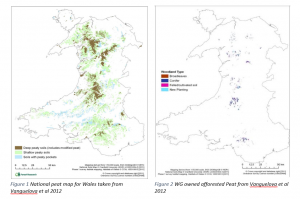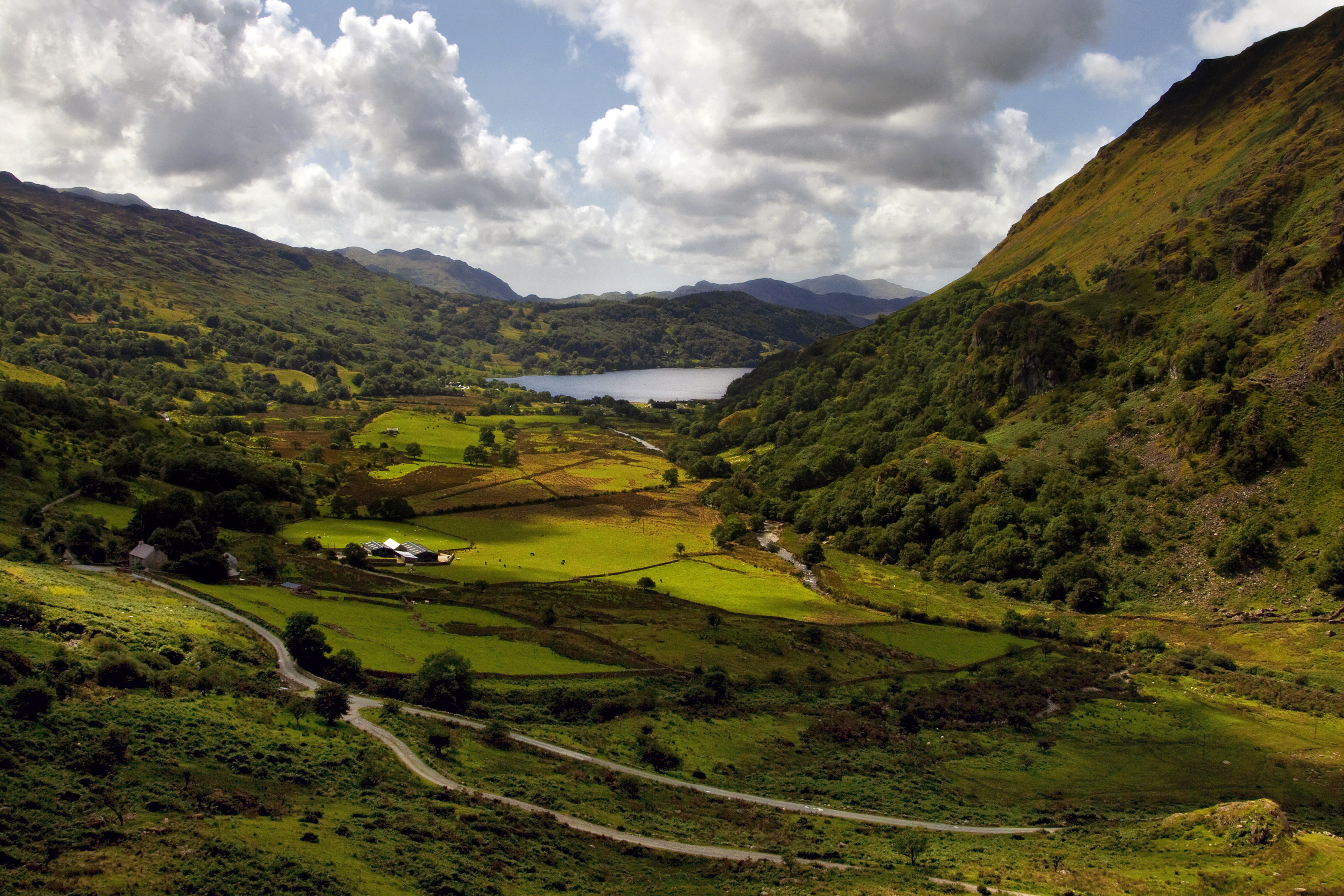Afforested Peatland Restoration in Wales – By Mike Shewring
BLOG
The recent release of the Committee on Climate Change (CCC) Report on Land Use: Policies for a Net Zero UK (2020)[1] makes for interesting reading for anyone with an interest or working in land management and ecology. This report presents the CCC’s first ever in-depth advice on UK land use policies. The report maps out the changes in land use practices required in order to deliver the UK Government’s Net Zero greenhouse gas emissions target by 2050. A key finding of the report is that policies be implemented to deliver restoration of at least 50% of upland peat and 25% of lowland peat in the UK by 2050. The costs of restoring 100% of UK peatlands is estimated at between £8 billion and £22 billion, although the carbon benefits for restoring peatland are estimated to outweigh the cost by 5 to 10 times (ONS 2019)[2].
This target not only struck a chord with me due to my work on a peatland restoration project but also raised some questions in my mind –
Are we ready to deliver habitat restoration on this scale? I don’t know…but probably not. What do we need? Appropriate training, research and access to funding….
Do we have the expertise and evidence base to deliver this? Yes I think we do, we have highly experienced peatland restoration ecologists and extensive experience of peatland restoration from projects such as moors for the future (https://www.moorsforthefuture.org.uk/), Exmoor mires (https://www.southwestwater.co.uk/environment/working-in-the-environment/exmoor-mires-partnership) and peatland action in Scotland (https://www.nature.scot/climate-change/taking-action/peatland-action). These have provided a solid evidence base for restoration approaches in shallow blanket peat, deep peat and more recently in afforested deep peat habitats[3] – where peat is > 2m in depth.
The evidence base, however, is sparse when it comes to forest to bog restoration in shallower peatland habitats, specifically what restoration techniques are appropriate and cost effective for afforested peatland restoration. Does this matter? Well it depends, but I think probably yes and more so where the peat resource is on average shallower.……
How is this relevant to Wales? Wales hosts approximately 120,000 hectares[4] of peaty soils, a large proportion of which are in unfavourable condition (Figure 1). It is currently estimated that ~18,000 ha of deep peat in Wales is afforested of which ~11,000 ha is owned by Welsh Government (Figure 2).

Based on the CCC report recommendations, Wales and the Welsh Government (WG) should be aiming for the restoration of ~60,000 ha of this peatland by 2050. These extensive land holdings, originally acquired for forestry, now provide a significant opportunity for large scale peatland restoration. It seems to me that this 11,000 ha of afforested peatland represents the low hanging fruit for WG to deliver on the ~60,000 ha recommended by the CCC report. So the evidence gaps around peatland restoration in afforested peats <2m deep certainly matter in a Welsh context.
The future management of these areas and a managed shift from forestry to restoration of peatland vegetation will represent a fantastic example of delivery against the new policy and legislative framework that is in place in Wales (i.e. Environment Act (Wales) – 2016, Well Being and Future Generations Act 2015) and our progress towards net zero.
Whilst the carbon cycling and balance of carbon sequestration by trees vs peatland restoration carbon loss reduction/ sequestration is not fully resolved, the emerging consensus seems to be restoration is highly likely to be net beneficial in all peat >0.5 m in depth. The additional wider benefits of peatland restoration are well researched and clear (reduced flood risk[5], reduced wildfire risk[6], improved water quality[7], biodiversity enhancement ….) and these coupled with the economic, health and well-being benefits such investment will bring to the communities, makes restoration in these areas, in my opinion, a no brainer.
For example, the latest census information (2011) for the valleys communities present around the southern areas of afforested peatland shown in Figure 2, show some worrying trends. In the Afan Valley 6.3% of people were unemployed and of those aged 16 and over, 43.3% have no qualifications. Whilst in Rhondda Cynon Taf (RCT) 4.7% of people were unemployed and of those aged 16 and over, 35% have no qualifications. In addition 77.8% of homes in Afan and 65% in RCT were identified as being deprived. As such investment on the scale required to deliver afforested peatland restoration in this areas could be a catalyst to transformative change for many people and help deliver carbon benefits as well as jobs and wellbeing, through opportunities for employment, skill development and recreation.
I should declare an interest here as I am involved in a project in this area – The Lost Peatlands of South Wales as a project ecologist. This project is a Heritage Lottery funded project aiming to restore large areas of afforested peatland and deliver such benefits to the region. This project will help provide an evidence base for afforested shallower peat restoration techniques.
The project in combination with the Pen y Cymoedd Wind Farm habitat restoration works will deliver one of the largest habitat restoration projects in the UK (~1500ha) and will provide much needed investment into deprived communities. Alone these projects will deliver significant benefits to the community and environment. However, in my mind these also provide a significant opportunity for us to adopt a strategic approach to peatland restoration in South Wales based on the Lawton principles[8] of bigger, better and more joined up. These projects provide an obvious source from which to build out restoration works across the landscape utilising the expertise that will develop in local communities, along with the specialist plant equipment that will be purchased. What an opportunity…..
Mike is a freelance chartered ecologist currently working on a number of peatland restoration projects including the Lost Peatland’s of South Wales HLF project. He is also in the final year of a PhD on Woodland Birds at Cardiff University.
@mikeshewring
[1] https://www.theccc.org.uk/publication/land-use-policies-for-a-net-zero-uk/
[2] https://www.ons.gov.uk/economy/environmentalaccounts/bulletins/uknaturalcapitalforpeatlands/naturalcapitalaccounts
[3] Campbell., D. and Robson, P. (2019) Peatlands and Foresty.
[4] Vanguelova, E., Broadmeadow,S., Anderson, R., Yamulki, S.,Randle, T., Nisbet, T. and Morison, J. (2012). A Strategic Assessment of Afforested Peat Resources in Wales and the biodiversity, GHG flux and hydrological implications of various management approaches for targeting peatland restoration. Report by Forest Research staff for Forestry Commission Wales Project, with Reference No 480.CY.00075 (T), October 2012
[5] https://www.moorsforthefuture.org.uk/our-work/our-projects/making-space-for-water
[6] https://www.moorsforthefuture.org.uk/our-purpose/reducing-the-risk-of-wildfire
[7] Julia Martin-Ortega, Timothy E.H. Allott, Klaus Glenk, Marije Schaafsma (2014).Valuing water quality improvements from peatland restoration: Evidence and challenges, Ecosystem Services, Volume 9,2014,Pages 34-43,ISSN 2212-0416
[8] 1. Lawton, J.H., Brotherton, P.N.M., Brown, V.K., Elphick, C., Fitter, A.H., Forshaw, J., Haddow, R.W., Hilborne, S., Leafe, R.N., Mace, G.M., Southgate, M.P., Sutherland, W.J., Tew, T.E., Varley, J., & Wynne, G.R. (2010) Making Space for Nature: a review of England’s wildlife sites and ecological network. Report to Defra. http://archive.defra.gov.uk/environment/biodiversity/ documents/201009space-for-nature.pdf
Blog posts on the CIEEM website are the views and opinions of the author(s) credited. They do not necessarily represent the views or position of CIEEM. The CIEEM blog is intended to be a space in which we publish though-provoking and discussion-stimulating articles.
